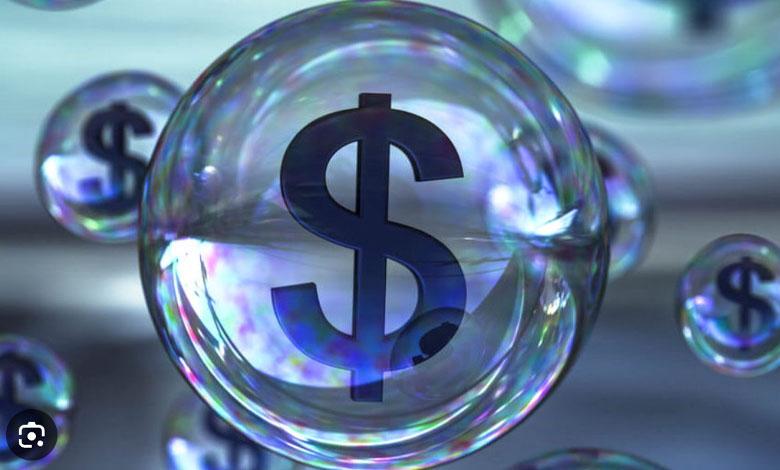“Playing with fire”: the US stock market has reached all-time highs (continued)

IA “FACT” already wrote that the US stock market is overheating again: the Buffett indicator, which shows the ratio of market capitalization to GDP, has exceeded 200%. This is well above historical norms and signals a possible financial bubble. The legendary investor himself is accumulating cash under these conditions: at the beginning of the year, the ego company Berkshire Hathaway had a record $325 billion, which may indicate anticipation of future investment opportunities.
However, Buffett’s indicator may not be as accurate as it used to be due to changes in the modern economy. Many large companies earn a significant portion of their assets overseas, which is not counted in US GDP. This can give the impression that the market is overheated, when in fact it is not.
The growth of digital services and products makes it difficult to accurately measure GDP, because traditional methods do not always take into account the full value of new technologies. This can distort the relationship between market capitalization and GDP.
The market is growing thanks to low interest rates, economic stimulus and the success of major technology companies. In the past, when the Buffett indicator was high, it often preceded crises (for example, in 2000 and 2008). But some experts believe that the modern economy has changed, and the market may remain overvalued for a long time.
Are there alternatives to the Buffett indicator?
Although the Buffett indicator provides a general idea of the state of the market, its limitations in today’s globalized and digital economy make it necessary to use additional indicators for more accurate analysis and forecasting of market trends.
So, an important tool for evaluating the value of companies on the stock market is the P/E ratio. Price-to-Earnings helps investors understand how expensive or cheap a company is valued on the stock market. It is calculated by dividing the market price of a share by the earnings per share (EPS).
During the Internet boom, many of them had very high P/Es, sometimes over 100 or even 1000. For example, in 1999 P/E Amazon was over 3,000 because investors expected huge profits in the future. But when it became clear that many brands couldn’t live up to those expectations, the market collapsed, and the Nasdaq Composite fell nearly 78% between 2000 and 2002.
After the 2008 financial crisis, many bank stocks had very low P/Es. For example, at Bank of America it was 5-6, indicating market expectations of further financial difficulties, even though the company was still profitable.
In 2021, Tesla’s P/E was above 1,000 amid investor expectations for significant earnings growth in the future, even though the company’s profits were thin at the time. Investors bet on innovation and development of the electric car market.
In 2023, Apple’s P/E was around 30, which is typical of stable companies with high profits and demand for their products. This showed investors’ confidence in the company’s business model.
Therefore, the P/E ratio must be evaluated in the context of the market situation and the specific industry, because the behavior of shares is determined by the expectations of investors and actual financial results.
What the “fear index” represents for the investor and how the Shillerian P/E smooths out short-term fluctuations
VIX Volatility Index, or “fear index”, shows how much investors expect fluctuations in the market. If the VIX is high, it means that investors are wary of the big changes and volatility that often happens in times of crisis.
For example, during the financial crisis-2008 VIX reached record level due to market panic. In March 2020, when the covid pandemic debuted, the VIX spiked again increased, because investors did not know how the pandemic would affect the economy. In 2022, the VIX also rose due to concerns about inflation and the possibility of a recession.
The next tool – CAPE Ratio, or Shiller P/E, – helps evaluate the stock market by averaging the earnings of companies over the past 10 years, adjusted for inflation. This helps smooth out short-term fluctuations. Here’s what the different CAPE Ratio levels mean. With values of 10-15, the market is most likely undervalued, that is, profitable for long-term investments. The next reference order – 15-25 – a certificate of the neutral zone, where share prices correspond to the average historical level. Finally, 25+ is a sign that the market may be overheated and the possibility of a correction or decline is increasing.
Before the market crash in 2000, the CAPE Ratio peaked due to massive investments in technology companies. During “dotcom bubbles” this indicator was very high, which showed that the market was overheating. After the crisis, the total value of dot-com stocks decreased by $1.755 trillion, and the prices of most stocks fell by 80-90%.
Before the crisis of 2008, this indicator was significantly higher than average historical values, which again warned of a possible decline.
In 2021, after the market recovered from the pandemic, the CAPE Ratio rose again due to large infusions of money from the US Fed and high expectations of corporate growth. In 2022, amid rising inflation and tight monetary policy, the market began to decline and the CAPE Ratio declined.
That is, the CAPE Ratio remains one of the best indicators of market valuation in the long term.
What can trigger a stock market correction
The stock market is an arena dominated not only by numbers, but also by the emotions, fears and hopes of investors. Market correction, that is, a sharp decline in share prices can be caused by a number of factors that often interact to form a perfect storm for a crash.
When the Federal Reserve increases interest rates, business and consumer loans become more expensive. In 2022, this rate hike caused a significant drop in stock markets. The S&P 500 has lost more than 20% of its value in a year.
Wars, sanctions and international conflicts can cause panic among investors, forcing them to sell stocks and put money into safer assets. For example, full-scale Russian aggression in February 2022 caused global stock markets to plummet as investors feared the economic consequences of the conflict.
The collapse of large companies or the discovery of large-scale financial fraud can undermine confidence in the market and cause a massive sell-off in stocks. For example, the bankruptcy of the investment bank Lehman Brothers in 2008 was a catalyst for the global financial crisis, which led to significant losses in the markets and recession in many countries.
Perhaps a textbook example of how during the covid pandemic in 2020, many countries introduced lockdowns, which provoked a decline in consumer demand, which, in turn, caused a drop in corporate profits and, as a result, the collapse of stock markets.
Do not play with fire, do not put all your eggs in one basket, cash is king in times of crisis, choose quality, not the crowd
In the stormy sea of financial markets, investors are often faced with a choice: panic or act strategically. Let’s consider key approaches that will help not only to preserve capital, but also to multiply it in conditions of market storms.
The alphabet of any investor is the need to distribute investments between different classes of assets – shares, bonds, gold, real estate, because such diversification reduces the risk of losses. When one sector declines, another may rise, offsetting the losses.
For example, during the 2008 financial crisis, investors who held equity in gold were able to offset losses from falling stocks as the price of gold rose.
Holding a portion of your portfolio in cash or liquid assets allows you to react quickly to market opportunities by buying assets at discounted prices during corrections.
During the COVID-19 pandemic, when the markets suffered a sharp decline, investors with liquid reserves were able to buy stocks of promising companies at discounted prices, making significant gains during the market recovery.
So, instead of blindly following market trends, it is worth it analyze financial indicators of individual companies. Investing in stable and promising businesses can provide long-term benefits even if the overall market declines. The example of Apple is illustrative, which has survived more than one market crisis, but thanks to strong financial indicators and innovations in the long term, its shares continue to grow.
In periods of instability, high-risk investments should be avoided, in particular, cryptocurrencies or shares of companies without stable profits. These assets can bring high returns, but the risk of loss is also significant. Yes, in 2022, the crypto market experienced significant losses, and many investors who invested without proper risk analysis lost significant amounts.
…So, the US stock market is showing signs of overheating, but traditional indicators such as the Buffett ratio can give a distorted picture due to the changing structure of the global economy. At the same time, alternative indicators – P/E, CAPE Ratio and VIX – give a more comprehensive picture of the state of the market. Fortunately or unfortunately, despite historical parallels with past crises, the market remains unpredictable. The main takeaway for investors: avoid panic, diversify assets and bet on quality, rather than blindly following market trends.
Tetyana Viktorova





